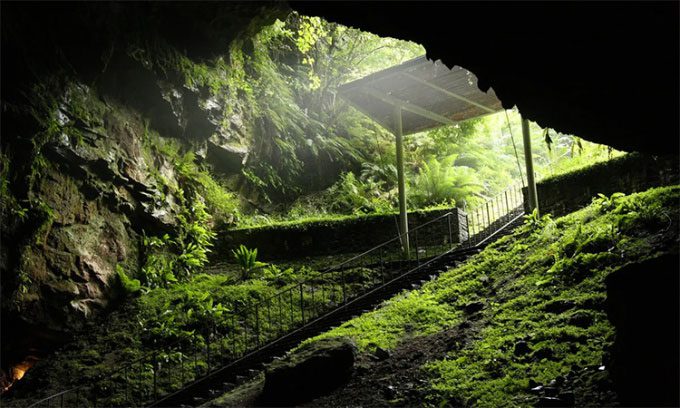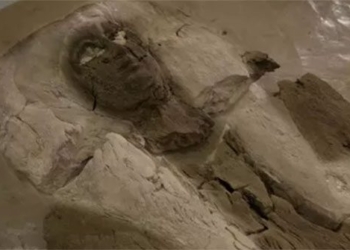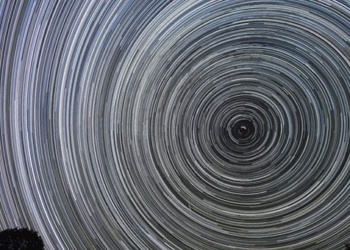Dunmore Cave is a cave located in southern Scotland, discovered in 2017. Inside the cave, archaeologists found hundreds of human bones and various artifacts, including silver and bronze items.
Dunmore is a cave system in County Kilkenny, formed over millions of years as glacial meltwater dissolved limestone through a chemical process. It is one of the largest natural caves in Ireland, extending approximately 402 meters and reaching a depth of 46 meters.

Stairs leading to Dunmore Cave. (Photo: Mark Heard/Flickr)
One of the earliest reports of the massacre in Dunmore Cave comes from Bishop George Berkeley. He visited Dunmore Cave as a boy in the early 1700s and recalled hearing stories about piles of bones stacked up in the dark cave. However, the story behind the victims has been controversial for many years.
According to “Annals of the Four Masters,” a chronicle that records the history of Ireland from ancient times until 1616, Derc Ferna—likely the old name for Dunmore Cave—was the site of a massacre in 930. Gofraid ua Ímair, the Viking chieftain in Dublin, raided and destroyed Dearc Fearna, where 1,000 people died that year.
Archaeological evidence cannot precisely confirm the events described in the chronicle. However, experts found a large amount of human bones in the cave during an excavation in 1869. In 1973, archaeologists discovered the remains of 19 adults, 25 children, and a multitude of silver coins dating back to around 930.
Some have speculated that the bones in Dunmore Cave could belong to soldiers from the Eleven Years’ War in Ireland (1641-1653) or victims of the Irish Rebellion of 1798. However, a study conducted in 2004-2005 dated the skeletons using radiocarbon methods. The study ruled out the possibility that the bones were from the 1798 rebellion or the Eleven Years’ War, indicating that many skeletons date back to around the 10th century, aligning with accounts of the Viking massacre in 930.
Archaeologist Neil Jackman hypothesizes that locals fled into Dunmore Cave upon hearing news of the Viking invaders. This explains the significant number of children and women among the remains. The Vikings lit fires at the cave entrance to use smoke to drive people out and capture them for sale in the slave market. This also accounts for the discovery of some stones and charred remains in the cave. Ultimately, the cave filled with smoke and depleted oxygen, killing all those who sought refuge inside.
However, many questions remain regarding Dunmore Cave. Despite its connection to the Vikings, it is possible that the bones in the cave do not provide evidence of a massacre but rather represent a Viking burial site, similar to other burial sites in Ireland.
“Is Dunmore Cave a burial site or the scene of the massacre recorded in the chronicles? Do the remains belong to Vikings buried in ‘pagan’ land, or are they the innocent victims of a Viking massacre? Only further research and excavations can clarify these important questions,” concluded the authors of a 2007 study.




















































